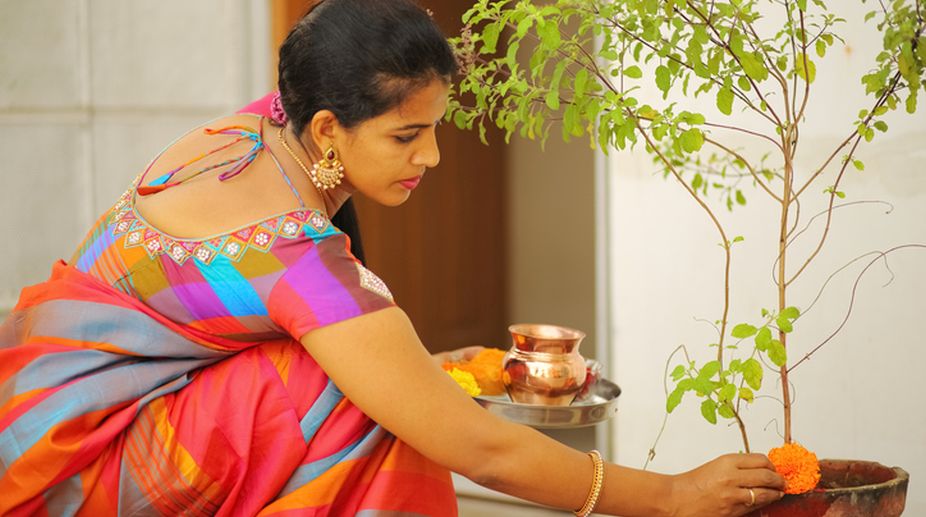Mahreen takes joint lead, Kartik lying 4th at US Kids World Teens Champs
Two other Indians Vihaan Jain (76-74) and Arshvant Srivastava (80-73) were trailing further down in T-39 and T-65th places.
It is like a traditional Hindu wedding. Special foods and sweets are prepared as in a wedding.

(Getty Images)
Kartik month is the most auspicious month of all 12 Hindu months. This is the favourite month of both of the supreme gods Lord Vishnu and Shiva. It is believed that praying to lord during this month can help attain salvation (moksha).
Among the long list of Kartik festivals, ‘Tulsi Vivah’ falls at the end of the pious month. Tulsi Vivah is the ceremonial marriage of the Tulsi plant (holy basil) to the Hindu god Vishnu or his avatar Krishna. The ritual is performed on any of the days between the 11th day of the bright fortnight to the full moon day.
According to Padma Purana, Tulsi was considered as the mythological wife of Lord Vishnu. The marriage ritual is performed in the evening. The celebration starts with the decoration of Tulsi pot in the courtyard. Satvik rangolis are drawn around the Tulsi plant and then it is ritualistically worshipped with devotion. While worshipping, one should sit facing westward. The names of Shri Krishna and Tulsi Devi are chanted at that time. After the mantras are recited, those attending the Tulsi Vivah throw rice and flowers on the bride and groom. The Tulsi plant is offered mangal sutra and sindoor to consider the wedding complete. When the Tulsi marriage is done, the food items which were restricted by the devotees and observers during this month are first donated to a Brahimin and then eaten.
Advertisement
One can invite relatives and neighbours to attend this function. It is like a traditional Hindu wedding. Special foods and sweets are prepared as in a wedding. These are offered to the guests attending the ceremony. The couple organising the wedding do the kanyadaan of the Tulsi plant. They bear all expenditure of the function. All the offerings that are made in the Tulsi Vivah are given either to the priest or to some girl who is to get married.
There was a pious woman named Brinda. She was devoted to her husband who was a demon king named ‘Jalandhar’. Jalandhar wanted to defeat trinity. Due to Brinda’s faithfulness towards her husband, it was almost impossible to kill him. So, one day Lord Vishnu disguised himself as Jalandhar and went to spend time with Brinda. Brinda could not recognise him. The chastity of Brinda was destroyed by the act of Lord Vishnu. When she got to know about it, she cursed him that he will become dark in colour and will be separated from his wife at some point of time. Due to this curse, Vishnu was transformed into the Shaligram stone that is black in colour and in the incarnation of Lord Rama, he suffered the pain of getting separated from his wife Sita. Lord Vishnu compensated for what he did to Brinda by marrying her on the day of Prabhodini Ekadashi in her next birth when she was embodied as Tulsi plant. Since then, the day is celebrated in the form of Tulsi Vivah.
God loves purity and holy basil is the symbol of spiritual purity. You can see Shri Krishna wearing the necklace of Vaijayanti beads. The marriage of the two signifies the oneness of the embodied soul and god. This marriage is considered to be the perfect marriage in Indian culture. The subtle frequencies of Shri Vishnu and Devi Tulsi arrive in the universe on the eve of this occasion.
Advertisement